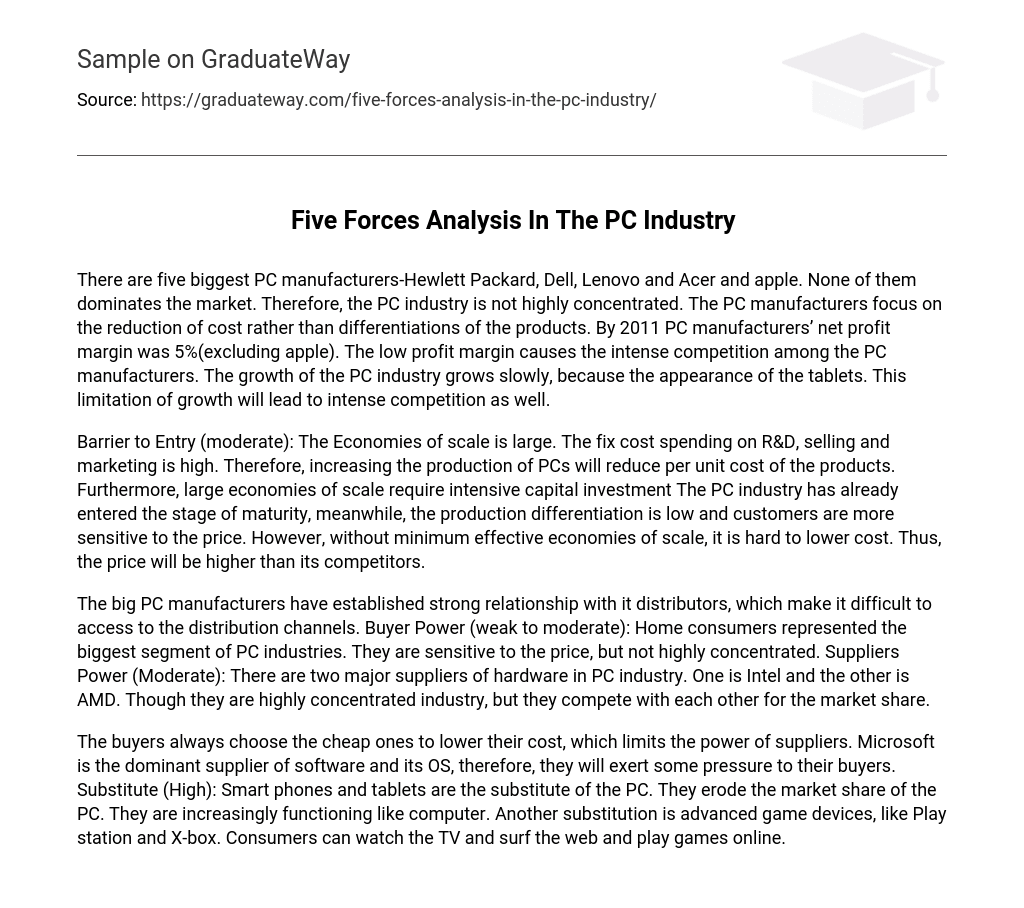There are five biggest PC manufacturers-Hewlett Packard, Dell, Lenovo and Acer and apple. None of them dominates the market. Therefore, the PC industry is not highly concentrated. The PC manufacturers focus on the reduction of cost rather than differentiations of the products. By 2011 PC manufacturers’ net profit margin was 5%(excluding apple). The low profit margin causes the intense competition among the PC manufacturers. The growth of the PC industry grows slowly, because the appearance of the tablets. This limitation of growth will lead to intense competition as well.
Barrier to Entry (moderate): The Economies of scale is large. The fix cost spending on R&D, selling and marketing is high. Therefore, increasing the production of PCs will reduce per unit cost of the products. Furthermore, large economies of scale require intensive capital investment The PC industry has already entered the stage of maturity, meanwhile, the production differentiation is low and customers are more sensitive to the price. However, without minimum effective economies of scale, it is hard to lower cost. Thus, the price will be higher than its competitors.
The big PC manufacturers have established strong relationship with it distributors, which make it difficult to access to the distribution channels. Buyer Power (weak to moderate): Home consumers represented the biggest segment of PC industries. They are sensitive to the price, but not highly concentrated. Suppliers Power (Moderate): There are two major suppliers of hardware in PC industry. One is Intel and the other is AMD. Though they are highly concentrated industry, but they compete with each other for the market share.
The buyers always choose the cheap ones to lower their cost, which limits the power of suppliers. Microsoft is the dominant supplier of software and its OS, therefore, they will exert some pressure to their buyers. Substitute (High): Smart phones and tablets are the substitute of the PC. They erode the market share of the PC. They are increasingly functioning like computer. Another substitution is advanced game devices, like Play station and X-box. Consumers can watch the TV and surf the web and play games online.





